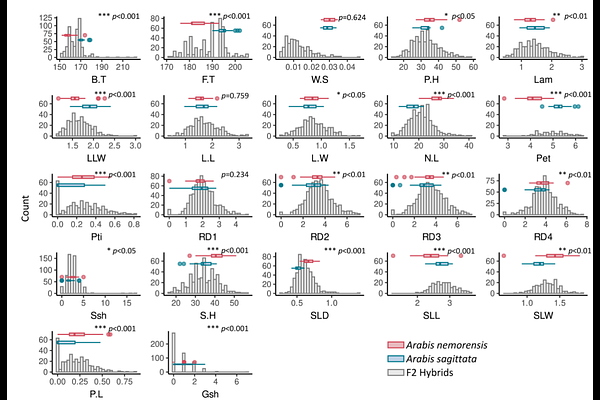Contemporary hybridization among Arabis floodplain species creates opportunities for adaptation

Contemporary hybridization among Arabis floodplain species creates opportunities for adaptation
Rahnamae, N.; Metzger, L.; Hoerdemann, L.; Korfmann, K.; Khan, A. S.; Dent, C. I.; Amar, S.; Wijfjes, R.; Ali, T.; Schmitz, G.; Stich, B.; Tellier, A.; de Meaux, J.
AbstractHybridization between closely related species is increasingly recognized as a major source of biodiversity. Yet, whether it can create advantageous trait combinations while purging harmful alleles remains unknown. We studied Arabis nemorensis and A. sagittata, two endangered species that currently hybridize in a single hotspot. We measured 22 phenotypic traits and mapped their genetic basis in an F2 population, after generating high quality genome assemblies for both species. In total, 58 QTLs were identified for 20 traits, with additive and dominance effects best fitting Gaussian and logistic distributions, respectively. Six large-effect QTLs were linked to significant hybrid fitness loss. Two genomic regions showed strong transmission bias favoring A. sagittata alleles, potentially accelerating their introgression. However, 48% of QTLs were unlinked to reduced fitness or segregation distortion and may generate genotypes exceeding parental performance. Notably, a major QTL affecting flowering time explained 23% of phenotypic variation and implicated TFL1 as a candidate gene for life history adaptation. While most QTLs lacked overlap with past selective sweeps, indicating limited recent positive selection, 5 of 7 QTLs for rosette size overlapped with sweep signatures in the parental lineages. Overall, our findings offer unique insights into incipient stages of hybridization.